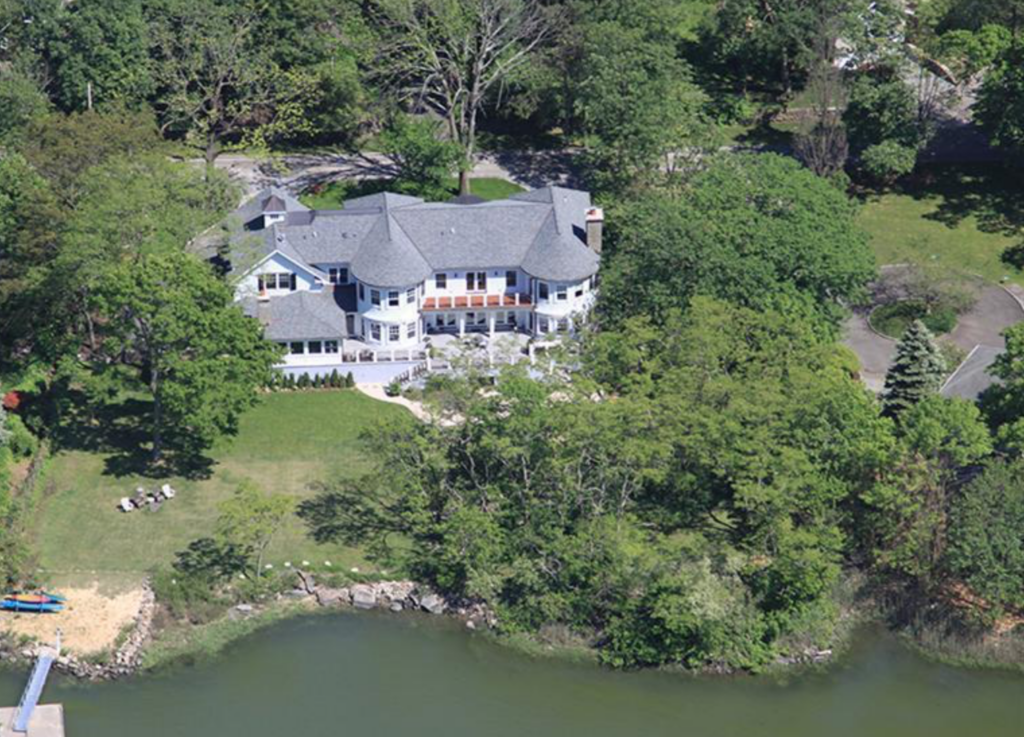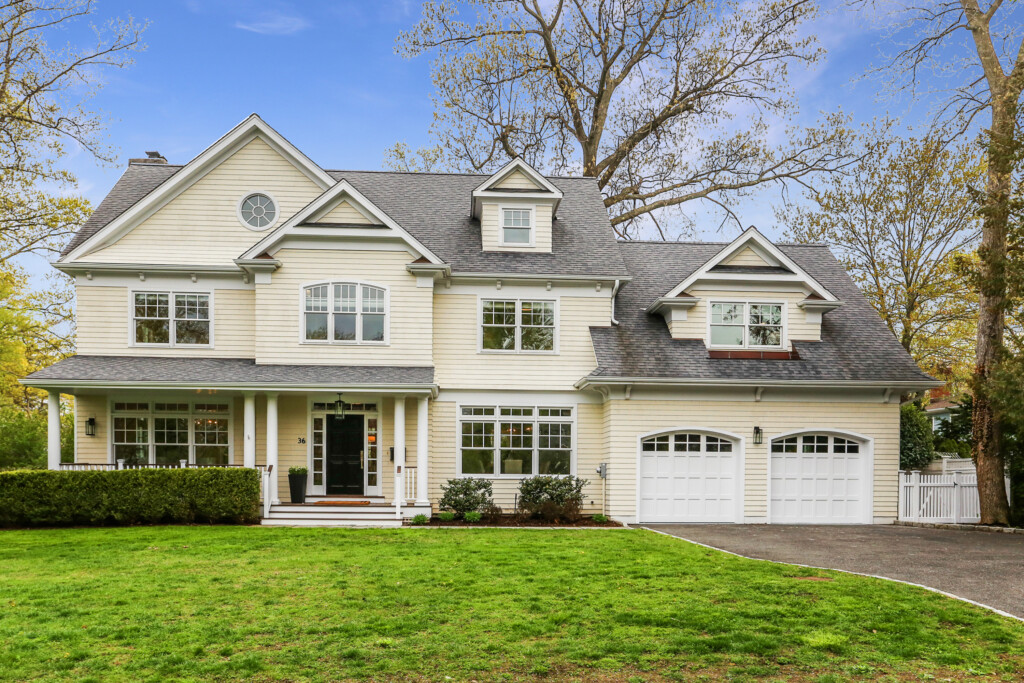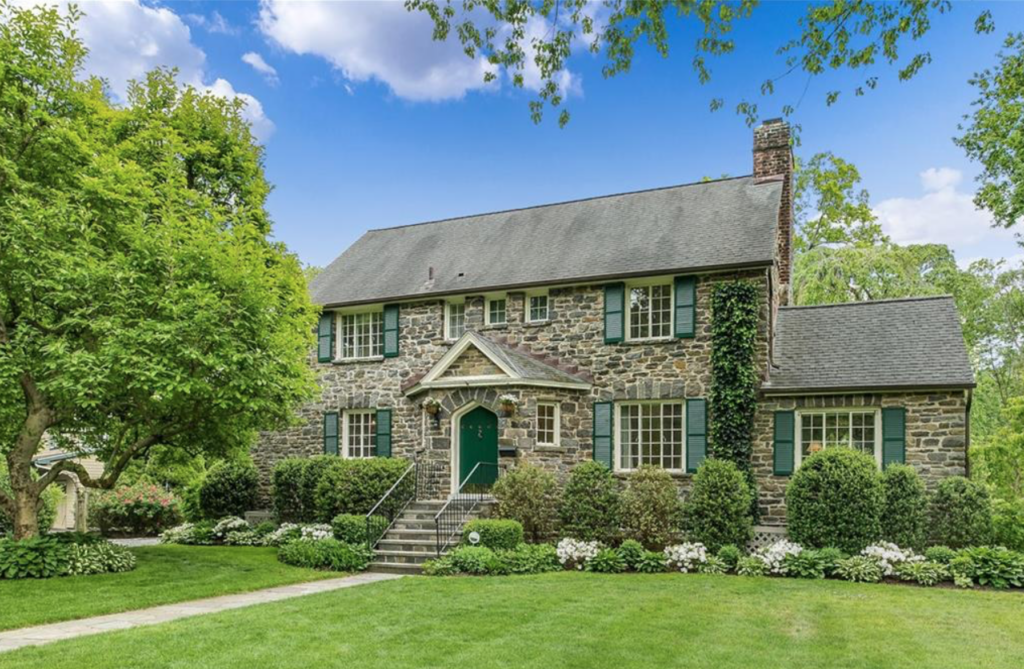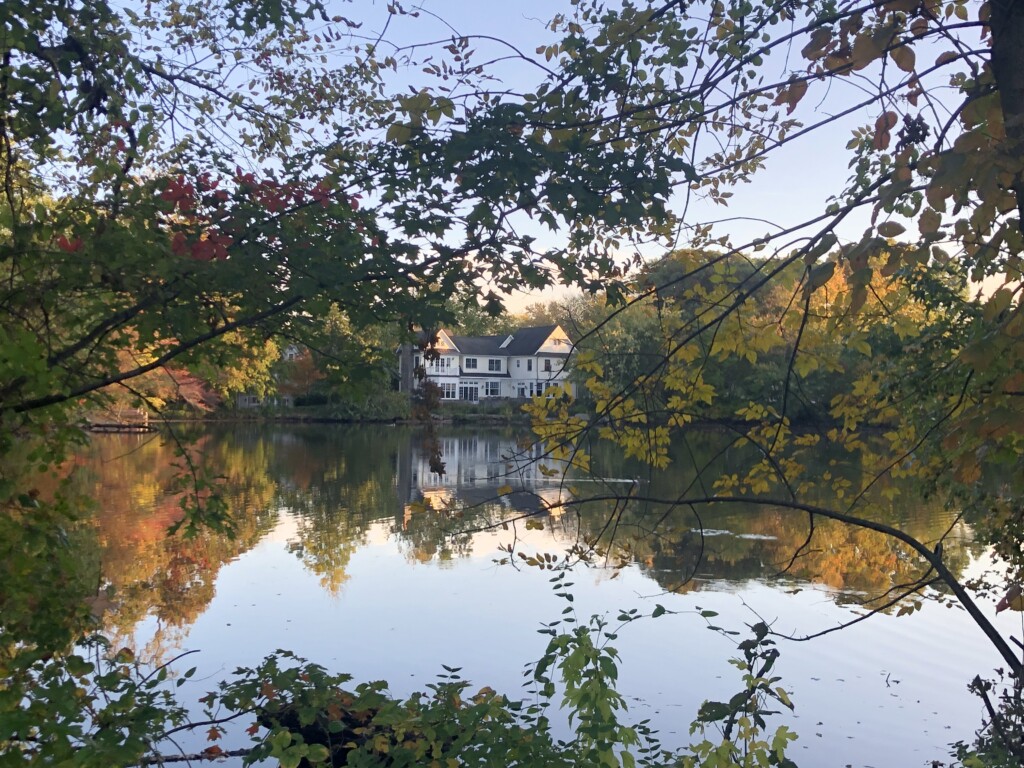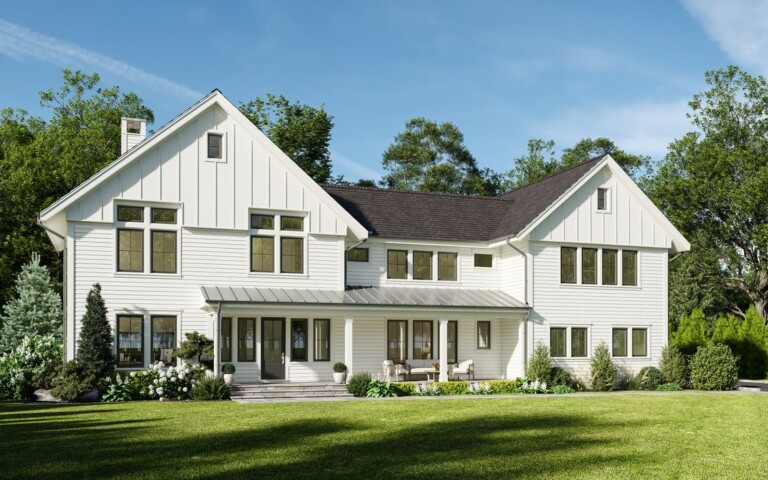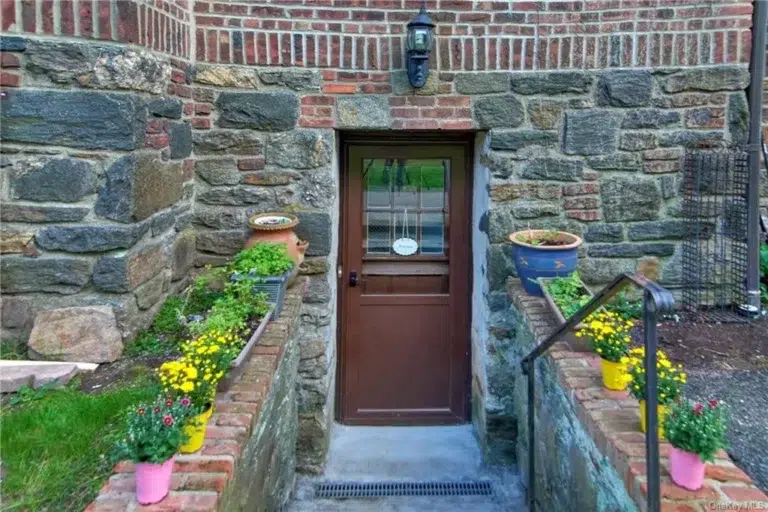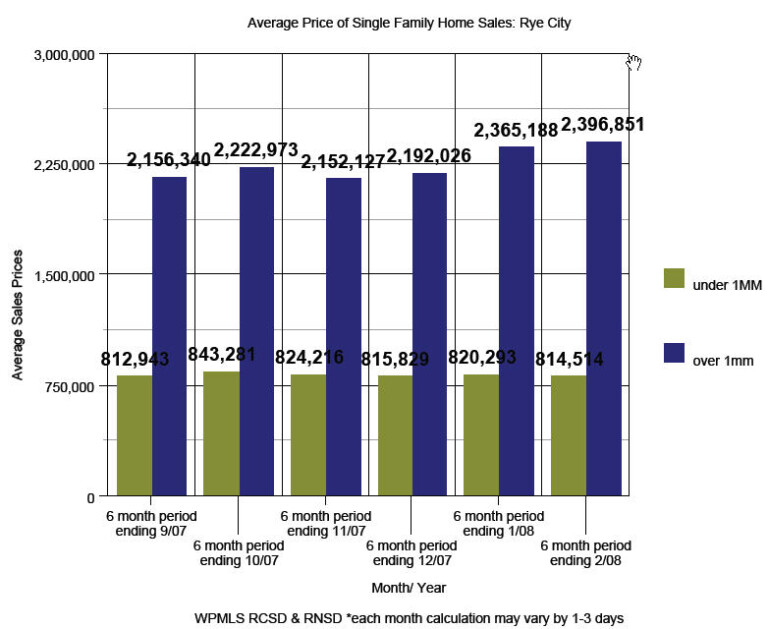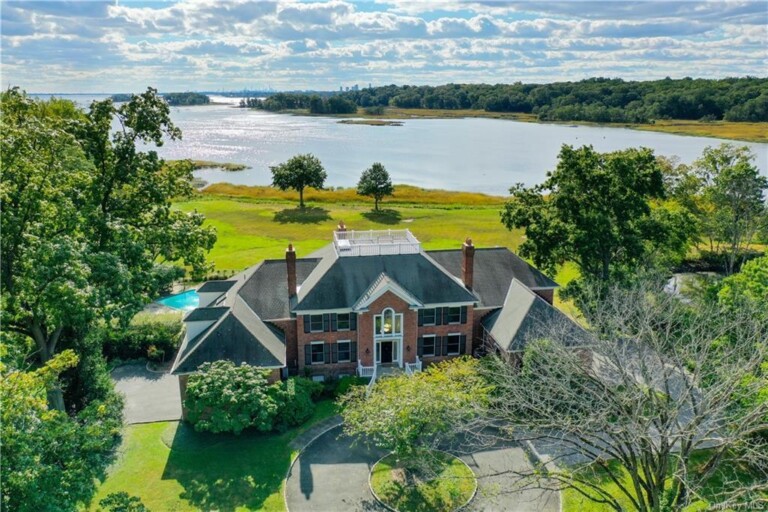To Rye With Love: Check Out These 10 Neighborhood Gems
(PHOTO: 740 Old Milton Road in the Milton Harbor neighborhood.)
Special promotional content provided by Fiona Dogan of Julia B. Fee Sotheby’s in Rye
By Fiona Dogan of Julia B. Fee Sotheby’s
In 2020 our neighborhoods took on a whole new importance. Many of us found ourselves spending more time close to home than ever before. We went through the shared tribulations of the pandemic with friends and neighbors, strolling the streets of our immediate community, week after week.
Perhaps you noticed things you hadn’t before. Wondered about an older home on your street. Stopped to read a historic marker. Maybe you felt a sense of discovery. A renewed pride in your community. Learning about this history of a place can do that.
As a history major, I’ve always been captivated by Rye’s history — it is home to one of our nation’s founding fathers, John Jay; the oldest home in Westchester, the Knapp House; and several additional historically significant sites. As a seasoned real estate agent, I have extensive knowledge of Rye’s neighborhoods, but wanted to learn more about their history and what makes them distinct.
With a little help from my friends at the Rye Historical Society, I’ve put together this love letter to Rye to share with you a little of what’s historical, notable, and quotable about our neighborhoods. What’s amazing is that as Rye has evolved into the lively, modern community that we now call home, our neighborhoods have retained the warmth and character of their rich storied past. A compelling mix of people, businesses, and homes, our various neighborhoods represent the wonderful soul of Rye.
- #1 Church Row: This stately stretch includes the Tudor-style Blind Brook Lodge co-op community, built in the 1920s, whose residents today enjoy a short walk to Metro North and downtown Rye. Initially anchored by Christ Church and Rye Presbyterian at opposite ends, Church Row was joined by the Methodist Church in the 1850s. With no Catholic church within walking distance, Rye’s Irish families together bought property known as Kirklawn, and built a beautiful cathedral, called Resurrection Church (later acquiring the historic Methodist Church).
- #2 Dogwood/Upper Dogwood Lane – Developed in the Gilded Age, this neighborhood’s roots spell luxury. Wealthy families from New York City built their summer residences here to enjoy the fresh country air. Properties were large in order to accommodate horse stables and the stately homes, built in the late 1800s/early 1900s, were estate-sized to accommodate large domestic staffs. And it’s still luxurious today! The highest sale on record for the area was in 2015, when 12 Dogwood Lane sold for $6.4M.
- #3 Grace Church Street: The church we now know as Christ Church was known as Grace Church during pre-Revolutionary times. Built in the late 1600s, Grace Church served as the boundary wall for Rye’s common grazing land owned by Rye’s original proprietors (what we might think of as an investment group today). Today you’ll find high-end homes with alluring, waterfront views—including 410 Grace Street, now on the market for $7.95M.
(PHOTO: 36 Hix Avenue in Hix Park.)
- #4 Hix Park: This neighborhood is best known as the birthplace of the 20th century’s most popular poet, Ogden Nash. Born at the former estate owned by William Hix, a Colonel in the Confederate Army, Nash grew up at Ramaqua, a showplace of a villa later bulldozed to make way for I-95. At one time, Rye was home to 15 or 20 mills, including Chapmans Mill, which stood on the ground where Hix Park was later developed. Today Hix Park offers modern living within walking distance to Rye Town Park and Beach.
- #5 Indian Village – On land bought by the Apawamis Land Company in 1915, owner Stuyvesant Wainwright subdivided and developed properties as year-round homes in an organized grid-style neighborhood. Established between 1915-1930, the area became known as Indian Village because most of the streets were named after Native American tribes located in New York.
(PHOTO: 22 Holly Lane in Loudon Woods.)
- #6 Loudon Woods: In tandem with Indian Village, Stuyvesant Wainwright also developed the more pastoral Loudon Woods. Likewise, the neighborhood was built on a grid system, easily navigated by the automobile. I recently handled the sale of one of Loudon Woods original homes, 22 Holly Lane, built in 1925.
(PHOTO: View of Fiona Dogan’s home across Mead Pond.)
- #7 Mead Pond Estates: At the start of the 20th century, Rye’s rural character was underscored by the number of family farms dotting the landscape. One of the largest, Mead Farm, was purchased by a prominent New York attorney, John W. Sterling, for the development of The Osborn. Twenty-three acres of other farmland were subdivided in the 1950s into 42 one-half acre lots that came to be known as Mead Pond Estates. There, ranch-style homes sold for $23K and Colonials went for $35K. I’m lucky to call this area home—but not lucky enough to have paid those prices!
- #8 Milton Harbor: Now home to the exclusive Milton Harbor gated co-op community and neighboring harbor homes, residents enjoy marina and waterfront views. Boat building was an important part of the Rye economy in the 1800s. The Kirby Boatyard — located where Milton Harbor House now sits — famously built a racing yacht that won the America’s Cup prize in the race’s second year. As the area started to silt up, the age of schooner boats faded and the land became available for development.
- #9 Soundview Park/Boston Post Road Historic District: Developed in the 1890s, Soundview Park homes, such as Whitby Castle, were situated on two- to three-acre plots and served as summer residences for wealthy families requiring large properties for their barns and stables. Traces of that history are evident today: an all-stone renovated 1920s carriage house adjacent to the Rye Golf Club is currently on the market for $2.695M.
- #10 West Rye AKA “Little Dublin”: An influx of Irish immigrants, who started out as coachmen and carpenters for wealthy families in Rye, then became well-to-do in their own right, purchased property and established one of Rye’s first sub-divisions here. The Mead family has ties to this neighborhood: After the Mead family sisters died — most of them unmarried — their farmland became available for development. Residents today can walk to the Rye Roadhouse, home to great Cajun and Creole cuisine.
Special thanks to the sources of this story, the staff at the Rye Historical Society. Fiona Dogan is a top-producing realtor with Julia B. Fee Sotheby’s in Rye.

